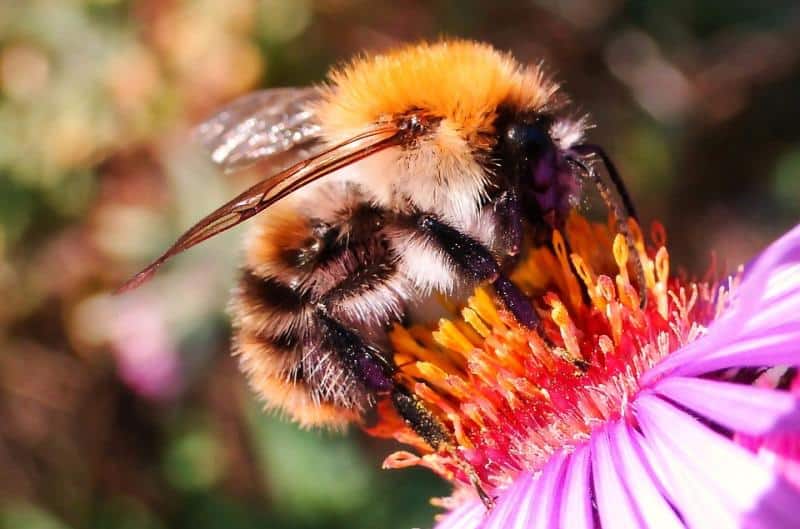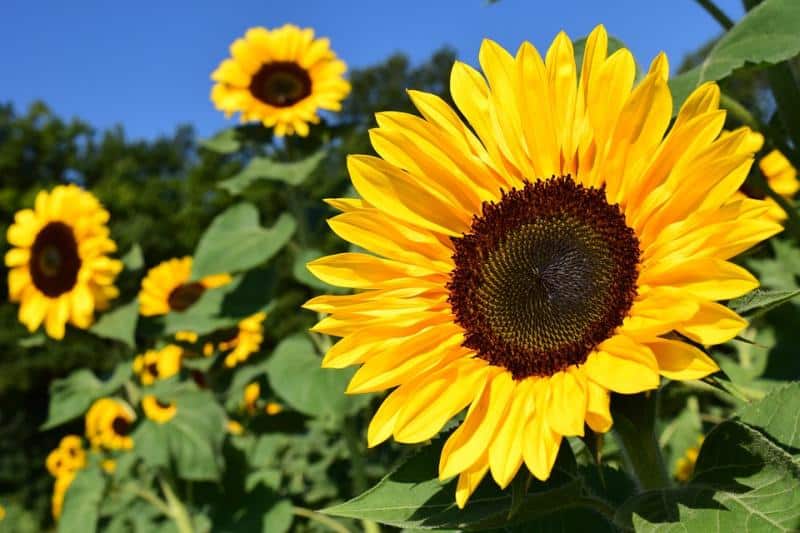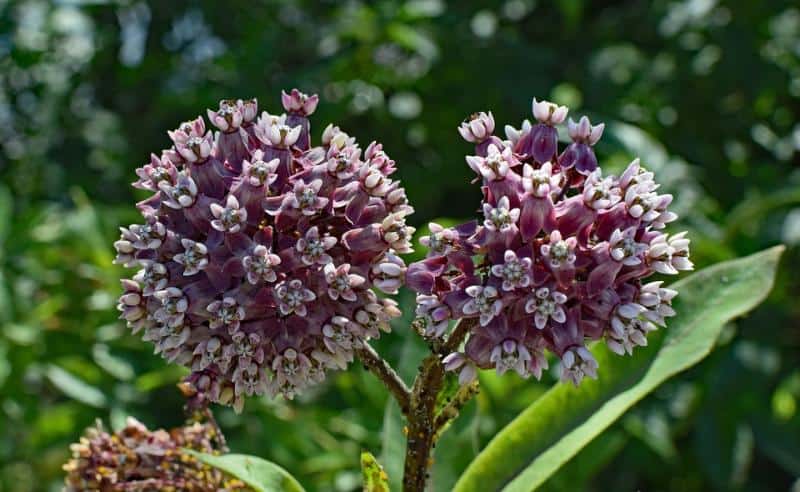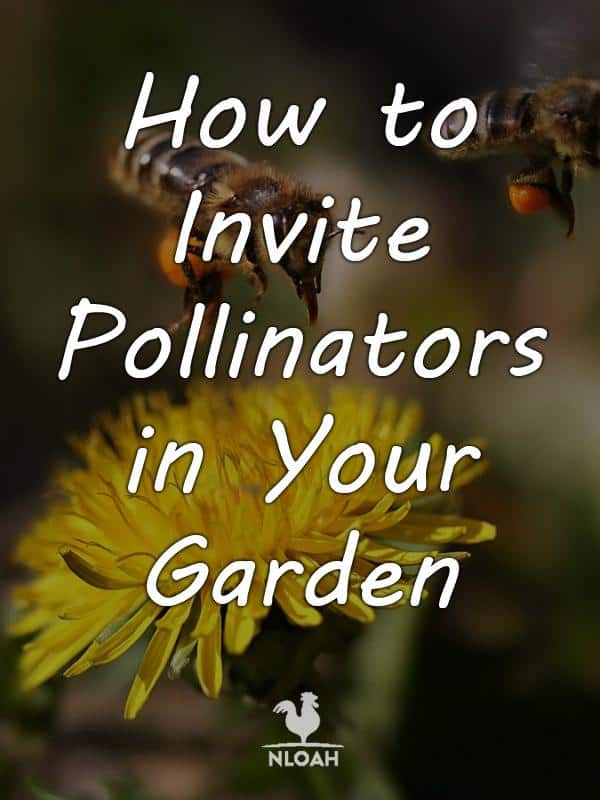Smart gardeners know the importance of attracting pollinators to a garden. Pollination is a process in which pollen is moved from one plant to another, so fertilization can take place. Pollination occurs in many ways and insects also help in the process, hence they are called pollinators.
There’s a diversity of plants that are grown around the globe which require pollination. In the U.S alone, pollinators contribute to $40 billion worth of products every year.
Pollinators like bees, spiders, bumblebees, and butterflies help keep a garden healthy and rich by pollinating plants and increasing production…
And inviting pollinators to your garden is not that difficult. With a nicely maintained garden, inviting pollinators becomes extremely easy. Some of them will come on their own – it’s a natural process, insets love plants, but for some you will have to do a little bit of work.
Let’s look at the various ways in which you can attract pollinators into your garden.
Create A Pollinator-Friendly Habitat
Food, water and shelter are the primary things that almost all living organisms require, including pollinators. Making your garden full of these three things will help in attracting pollinators.
You don’t need a large garden, pollinators can also be invited to small garden beds that are made up on a small piece of land.
Make sure you have these things in your garden to make it a pollinator friendly habitat:
Shelter
Pollinators look for shelter to protect themselves from harsh climates, predators and other dangers.
Shrubs and clumps of unmowed grass aid pollinators in this regard. So make sure to keep a small area in your garden untouched to provide shelter to pollinators. In addition, some pollinators love to make nests or take cover in trees and shrubs.
Butterflies are known to lay eggs on plants, dead limbs and even on the ground. Hence, they can be easily attracted by adding shrubbery and various plants in the garden.
Food
Flowers that are rich in pollen and nectar serve as food for pollinators. Adding such flowers can help attract a large number of pollinators, especially, bees to the garden.
The main source of energy for bees is nectar as it is loaded with sugar. Other than that, pollen is also a source of food for many pollinators.
Pollen provides a good amount of fats and proteins. However, today, a lot of gardeners hybridize (to control flower disease, size and color) flowers. Hybridizing minimizes the chances of nectar and pollen production by making the plant sterile, this makes pollinators stay away.
Therefore, you should add source of food for pollinators and reduce hybridizing as much as possible so that you can see a lot of pollinators in your garden.
Clean Water
Water is a necessity for all living organisms including pollinators. You can attract pollinators to your garden by keeping a source of drinkable water near your garden.
Pollinators are attracted to water that’s free from bacteria, chemicals and impurities.
You can add small ponds in the vicinity of your garden to serve as a source of clean water to pollinators.
Bees and butterflies are also attracted to sea salt mud. You can get some sea salt and mix it in mud to attract them and increase pollination in your garden.

Planting Diversity
There are many ways to invite pollinators, however, the most effective one is to plant strips of colorful flowers because most of the pollinators are attracted to colors. Also, planting a variety of plants will help.
Bees prefer visiting native plants more than exotic ones. Planting aster, lupine, huckleberry, sage, goldenrod, snowberry, oregon grape, currant, lilac, willow and many more.
- Plant clumps as they tend to attract more pollinators. Some plants grow well in clumps and some grow well individually, so make sure to pay attention to this factor as well when planting new plants.
- Also, most pollinators like bees love sunlight, so make sure that your garden receives a good amount of natural light if you want to attract pollinators. It is important for plants to grow as well.
Ground Nesting
As per various surveys, around 70% of bees make ground nests including bumblebees, sweat bees, and mining bees etc. However, this is possible only if the bare soil is undisturbed.
To attract them, leave the soil unearthed but close to your garden, and tuck away bare patches of soil nearby your garden.
Placing Artificial Nests For Bees And Bugs
Apart from letting bees make their own nests on the ground, you can make artificial nests for them as well. The more nesting locations in a garden, the more amount of pollinators will be attracted to your garden area.
Bee and bug hotels are suitable to help bees settle in your garden. Making these bug hotels is very easy. All you need to do is drill holes into untreated wood.
It’s up to you to make it aesthetically appealing, but bees don’t care about that. They can adjust in even an unsightly nest.
If you don’t want to make a custom nest by doing some effort then you can take the easy way. Buy readymade bug and bee boxes from commercial sources and simply have them hung somewhere close to your garden.
However, make sure to buy or create the right nest. Bees usually look for a nest that has a dead end on one side, meaning, it should be blocked from one side.
When the weather gets rough, these pollinators look for shelter, especially for nests. The more nest points you’ll make in your garden, the better.
To make it last longer, you can add a small roof of a water resisting material or have the nest placed under a tree so that rain doesn’t destroy it.
Nests don’t need to be replaced often, but to be on a safe side, increase the number of nests so that the bees can easily move from one to another in case there is a need to. This way they won’t end up moving to another garden.
Limit Herbicides And Insecticides
Weeds and pests are a gardener’s worst nightmare, and most people use insecticides and herbicides to keep them at bay. However, there’s a drawback to using such products. These sprays contain chemicals that pollinators don’t like one bit.
While spraying these chemicals, one need to make sure to take precautions. For instance, blooming weeds serve as a diet for bees and spraying over them can end that.
The solution? Mow the weeds off the bloom before applying the pesticide. Make sure you do it at a time when the weeds aren’t blooming.
Moreover, avoid using pesticides on windy days, as wind will diffuse the chemicals. This will not only create problems for the pollinators in your garden, but may also affect the health and taste of your produces.
Don’t Go Overboard With Hardscaping Or Mulching
While it’s true that adding hardscape elements to your garden make it eye pleasing but it can contribute to pushing pollinators away. Same goes for over mulching. The reason for this is that pollinators won’t get full access to the soil when there are hardscape elements and mulch over it.
This does not mean you should completely stop mulching. Mulching is a necessary process and without it your garden will not grow properly.
A solution to this is to leave a small area mulch free for pollinators such as bees to enjoy.
Control The Grubs
Pollinators love flowering weeds, however grub can take that away from them.
Dandelions, clover and various other flowering seeds help in attracting pollinators but grub may feed on the turf and destroy them. Here’s where using GrubEx or Acelepryn can be of help, as it doesn’t affect pollinators and helps keep the grub problem in check.
If you decide on using other insecticides such as imidacloprid or thiamethoxam ,then ensure that you spray them when weeds are not flowering.
Add Resources Other Than Nectar
Most insects like nectar, but some, such as butterflies love other resources as well. They are also attracted to animal waste and rotten fruits.
You can place ripe banana slices near your garden. Or you can ad salty water in a dish and placing near the garden can also help attract butterflies in your garden.
If you can, use sea salt instead of normal table salt to have an enhanced result.
Plant Flowers That Attract Bees
This is the most simple way, as most plants you grow right now may not be attractive to pollinators. Fruit flowers help attracting bees and a number of other pollinators, however, so does nectar.
Bees are of various species and may be attracted to different pants. Domesticated and wild native bees prefer visiting gardens that have a diverse range of flowers. In fact, they are also attracted to colors like blue, purple, white, and yellow. Some of their favorite flowers are asters, clovers and sunflowers.
Apart from these, they are also attracted to vegetable plants such as pumpkin and squash flowers.
When you’re making the list of plants to add to your garden, make sure to add as many plants native to your region as possible.
This can be a problem if you have limited space, but the good thing is that many of these flowers do not need a lot of space to grow. You can grow them in pots as well.
It should be noted that different flowers bloom at different times of a season. It would be a plus point if you made a list of plants that grow at different times. This will give you an edge as there’d be nectar and pollen all around the year and so will be pollinators.

Here are a few flowers that bees and other pollinators appear to love:
- Pale Purple Coneflower: This one is a favorite among pollinators. The beautiful pink and purple combination of colors is what attracts the bees. When it blooms fully, its flowers are sought after by many bees.
- Common Yarrow: Bees adore small daisy flowers, and this one has a lot of them at the top. Besides bees, it’s known to attract many other pollinators, and is also a great way to enhance the garden’s beauty with its yellowish-orange color.
- Sunflower: Bees are always looking for sunflower to feed. The top seed is rich in oil and can be used for a number of purposes other than attracting bees, such as extracting oil for cooking purposes. They also come in a wide variety of sizes, colors and heights.
- Blue Giant Hyssop: Bees love to gather around the spires of purple flowers around a blue giant hyssop. This plant is considered to be well suited for pollination purposes and also to make your garden look colorful and fresh. The plant belongs to the mint family and is a great way to attract bees to your garden.
- Horsemint: This piece of beauty is covered with shades of white and pink and grows in the presence of the sun. If your garden has a well drained soil then horsemint can help attract a huge amount of pollinators to your garden. This plant blooms in late summer and is said to grow even in harsh environments.
- Purple Coneflower: This plant not only attracts bees but butterflies and other pollinators as well. The top part of it contains many smaller flowers which attract pollinators. To enhance its effect on pollinators, plant them in a cluster rather than spreading them separately around the garden area. Pollinators that eat seeds are also attracted to this plant as it has seeds at the top.
- Black Eyed Susan: These are known to grow a black center and yellow flowers around it. They can grow in drier areas but where the soil is well drained. They have the tendency to attract a lot of pollinators as they are rich when it comes to producing nectar and pollen.
- Asters: The combination of pink, blue and purple on this flower is very attractive for a lot of pollinators. They serve as landing pads for many pollinators which is great because it’s easier for them to collect the pollen and nectar. Even butterflies adore asters.
- Joe Pye Weeds: These purple-red fuzzy flowers aid in attracting different pollinators. Besides spreading beauty to your garden, they are also a great source of nectar and pollen. They grow well in sunny areas but on moist grounds. A variety of bees including bumblebees and honey bees are seen near these flowers, feeding on the nectar and pollen. Wasps, flies and moths are also attracted to them.
- Goldenrods: Bee, bumble bees, native bees and even butterflies love goldenrods. There are over 100 kinds of goldenrods species available, all of them contribute towards attracting many kinds of pollinators as they are rich in nectar and pollen.
If you want to attract pollinators to your garden then these flowers are your best bet.
Pollen and nectar are said to be the two most searched things by pollinators and these flowers are loaded with them.
Add Milkweed To The List Of Plants In Your Garden To Attract Monarch Butterflies
Butterflies make great pollinators. Milkweed planting has declined by almost 90% and has affected pollination. According to a 1997 survey, around 1 billion monarch butterflies migrated from the United States to Mexico during winter.
Comparing that time with now, the number has reduced to 57 million, which is concerning because that’s almost a 90% reduction, all due to modern agricultural practices around the world.
Planting milkweeds in your garden can be a good idea as they attract monarch butterflies which are great pollinators.

Milkweed leaves are a source of diet for these butterflies which is why they find their way to gardens that have milkweeds planted. Also, butterflies lay eggs on milkweeds so that tiny caterpillars can feed on the leaves and grow to be butterflies.
Less Mowing
There are many benefits to keeping your garden less mowed if you wish to encourage pollinators into your garden. Many pollinators use the clumps of grass to hide from predators and some even find home and nourishment in the ground.
Mowing a garden more often has been related to a decline in pollinators coming to gardens and carrying out pollination.
Bumblebees make their nests in the ground to hide from predators. A garden that’s mowed too often can destroy these nests and force bumble bees to leave these places. So the less you mow, the better.
Now I know, mowing is an essential step to keeping your garden looking nice. The solution is to leave some areas in your garden alone.
Most of the pollinators love to take shelter in clumps, so making it easier for them to find clumps in your garden will encourage them to stay.
The Verdict
Pollinators play a major role in producing fruits and vegetables in a garden. Without their help, most of the plants won’t be able to produce good results. In the U.S, around one-third of plants depend on pollinators to produce their fruits and seeds. That’s why finding ways to encourage pollinators in your garden is vital.
Plant flowers that grow in different seasons so pollinators are attracted year-round, and your yield isn’t affected.
A very important point to remember is to not be scared of pollinators. Bees and bumblebees aren’t here to harm you, so welcome them into your garden and make it easy for them to visit it every day!

Michael is in love with nature and loves to spend his weekends with his pet dog at his farm where he grows organic fruits and vegetables. He’s a single parent who loves the idea of simple living.
